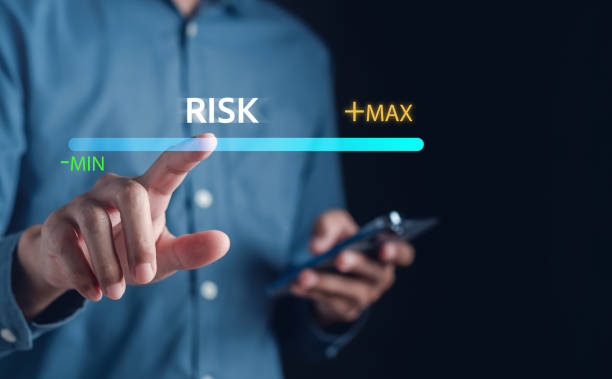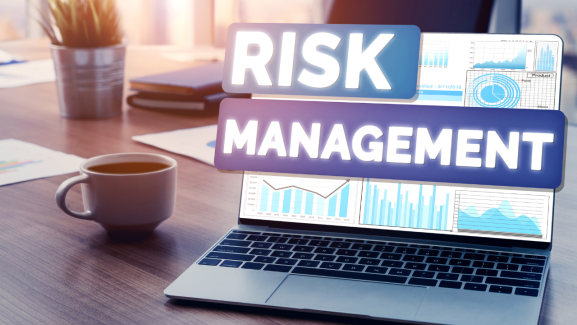The Importance of Risk Management in Cybersecurity
In today’s digital age, cybersecurity threats are more prevalent than ever. With the increasing reliance on technology and the internet, organizations face a vast array of risks that can compromise their sensitive data, disrupt operations, and damage their reputation. Effective risk management is crucial in cybersecurity to identify, assess, and mitigate these threats. In this article, we will explore the importance of risk management in cybersecurity and why it should be a top priority for organizations.
WHAT IS RISK MANAGEMENT?
Risk management is a systematic approach to identifying, evaluating, and controlling risks that could potentially harm an organization. In the context of cybersecurity, risk management involves identifying vulnerabilities, assessing the likelihood and potential impact of threats, and implementing measures to mitigate or eliminate those risks.
WHY IS RISK MANAGEMENT IMPORTANT IN CYBERSECURITY?
Risk management is essential in cybersecurity for several reasons:
1. Protection of Sensitive Data
Organizations handle sensitive data, including personal information, financial data, and intellectual property. Cybersecurity risks can compromise this data, leading to financial losses, legal liabilities, and reputational damage. Risk management helps identify vulnerabilities and implement measures to protect sensitive data.

2. Prevention of Financial Losses
Cybersecurity breaches can result in significant financial losses, both directly and indirectly. Direct losses include costs associated with notifying affected parties, providing credit monitoring services, and paying regulatory fines. Indirect losses include costs associated with system downtime, lost productivity, and reputational damage. Risk management helps prevent financial losses by identifying and mitigating potential threats.
3. Compliance with Regulations
Organizations must comply with various regulations, such as GDPR, HIPAA, and PCI-DSS, which mandate robust cybersecurity measures. Risk management helps organizations comply with these regulations by identifying and mitigating potential risks.
4. Protection of Reputation
Cybersecurity breaches can damage an organization’s reputation, leading to a loss of customer trust and business. Risk management helps protect an organization’s reputation by identifying and mitigating potential risks.
5. Business Continuity
Cybersecurity risks can disrupt business operations, leading to system downtime and lost productivity. Risk management helps ensure business continuity by identifying and mitigating potential risks.
HOW TO IMPLEMENT RISK MANAGEMENT IN CYBERSECURITY?
Implementing risk management in cybersecurity involves several steps:
1. Risk Identification
Identifying potential risks in cybersecurity involves recognizing vulnerabilities, threats, and likelihood of occurrence. For instance, a company using outdated software (vulnerability) may be susceptible to a cyberattack (threat) from a malicious actor (likelihood of occurrence: high).

Another example is an employee using a weak password (vulnerability) which could be exploited by a phishing attack (threat) from a ransomware group (likelihood of occurrence: medium). Additionally, a data center located in a flood-prone area (vulnerability) may face the threat of a natural disaster (threat) causing data loss or system downtime (likelihood of occurrence: low, but potentially high impact).
2. Risk Assessment
Assessing the potential impact of identified risks involves evaluating the potential consequences of a cybersecurity breach on an organization’s assets, data, and operations. For example, a successful phishing attack (risk) could result in the theft of sensitive customer data (impact: financial loss, reputational damage, and legal liability), while a ransomware attack (risk) could lead to system downtime and data encryption (impact: operational disruption, financial loss, and reputational damage). Similarly, a vulnerability in a critical software application (risk) could be exploited, resulting in data tampering or intellectual property theft (impact: financial loss, reputational damage, and competitive disadvantage).

3. Risk Prioritization
Prioritizing risks involves ranking them based on their likelihood and potential impact, to focus on the most critical ones first. For example, a risk assessment may identify three risks: a phishing attack (high likelihood, high impact), a vulnerability in a legacy system (medium likelihood, low impact), and a physical data center breach (low likelihood, high impact).
Based on this assessment, the organization would prioritize the phishing attack first (high likelihood and high impact), followed by the physical data center breach (low likelihood but high impact), and finally the legacy system vulnerability (medium likelihood but low impact). By prioritizing risks in this way, organizations can allocate resources effectively, address the most critical risks first, and maximize their risk mitigation efforts.
This prioritization also enables organizations to develop targeted risk mitigation strategies, such as employee training to prevent phishing attacks, physical access controls for the data center, and patching or upgrading the legacy system.
4. Risk Mitigation
Implementing measures to mitigate or eliminate identified risks involves taking concrete steps to reduce the likelihood or impact of a cybersecurity breach. For example, to mitigate the risk of a phishing attack, an organization might implement employee training programs to recognize and report suspicious emails, enable two-factor authentication, and conduct regular security awareness campaigns. To eliminate the risk of a vulnerability in a legacy system, an organization might patch or upgrade the system, implement additional security controls such as intrusion detection and prevention systems, or isolate the system from the rest of the network. Additionally, to mitigate the risk of a physical data center breach, an organization might implement physical access controls such as biometric authentication, surveillance cameras, and motion detectors, as well as restrict access to authorized personnel only.
5. Risk Monitoring

Continuously monitoring risks and updating risk management strategies involves regularly reviewing and assessing the effectiveness of risk mitigation measures, identifying new risks, and adapting strategies to address changing threats and vulnerabilities. For example, an organization might conduct regular security audits to identify new vulnerabilities, monitor threat intelligence feeds to stay informed about emerging threats, and analyze incident response data to identify areas for improvement. Based on this monitoring, they might update their risk management strategies by implementing new security controls, such as a web application firewall to protect against emerging web-based threats, or refine their incident response plan to improve response times and effectiveness. Additionally, they might also conduct regular risk assessments to identify new risks and update their risk register, and provide training and awareness programs to employees to ensure they are aware of the latest risks and mitigation strategies.
CONCLUSION
Risk management is crucial in cybersecurity to identify, assess, and mitigate potential threats. Organizations that implement effective risk management strategies can protect sensitive data, prevent financial losses, comply with regulations, protect their reputation, and ensure business continuity. Don’t wait until it’s too late, take the first step in protecting your organization’s cybersecurity today.
Estreet Security University offers comprehensive cybersecurity training programs that include risk management. Our programs are designed to help organizations identify, assess, and mitigate potential cybersecurity risks. Join our community today and take the first step in protecting your organization’s cybersecurity.


